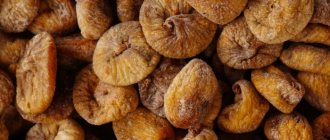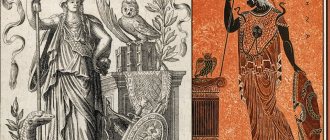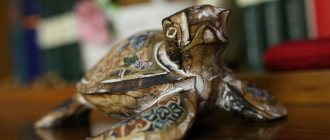» Signs » What a peacock feather can change in life
0
5719
Article rating
Among the huge number of items that decorate the home interior, a very prominent place is occupied by the feather of a peacock - a bird rightfully considered one of the most beautiful on earth. At the same time, attitudes towards it vary greatly: some believe that peacock feathers in a house bring exclusively positive things to the inhabitants of the house, while others, on the contrary, believe that this item is a source of troubles and troubles. What causes such a striking difference of opinion regarding peacock feathers and what advice should you listen to? More on this below.
Is it possible to keep peacock feathers in the house?
The purpose of the feng shui talisman is the peacock
In Feng Shui, the peacock is used as an activator of the career and fame zone. With its magnificent tail, the peacock attracts various honors and respect to the owner of the house.
The peacock talisman attracts happiness and joy into the home, promotes career growth and success at work. If you want to climb the career ladder as quickly as possible, then place the peacock talisman in the career zone, and it doesn’t matter whether it’s a figurine or an image of this beautiful bird. And if you want to achieve fame, recognition and honors, then place the talisman in the glory sector, then the peacock will help you raise your authority in the work team.
In Feng Shui, you can use not only figurines and images of a peacock as a talisman, but also its feathers. Peacock feathers will attract hidden opportunities to you that will help you achieve your goals.
Gold peacock figurines inlaid with jewelry are considered especially valuable. But those who were unable to purchase such a figurine should not be upset, because even homemade figurines and images of a peacock can be used as a talisman. These can be figures made of paper and plasticine, embroidery and other handicrafts.
The main thing is not to skimp on paint when you paint the peacock’s tail. Try to make the tail shimmer with many colors. After all, experts found 365 different colors in the peacock’s tail. Therefore, the more colorful your peacock's tail is, the better.
If you want to make a peacock talisman in the form of embroidery, then you should know that a peacock with a folded tail means nobility and beauty, and a peacock with a loose tail means knowledge and rewards.
How to make a peacock talisman
Charms made with one's own hands have great power, since during work a person saturates the talisman with his energy.
You can make an amulet from plasticine, dough or clay. The main rule is to use as many bright colors as possible when decorating the tail; it is allowed to decorate peacock feathers with beads or stones.
Expert opinion
Natalia Alexandrova
Numerologist, parapsychologist, tarot reader
The drawn image will also attract good luck and prosperity to your home, and will bring recognition at work.
Activation of the Feng Shui talisman - peacock
The peacock is considered more of a talisman of the glory sector, so its effect is best activated with the help of fire. If you have your own home and have a fireplace in your house, then Feng Shui experts recommend placing a peacock talisman once or twice a week on the fireplace, but this is only if the fireplace is operational and is constantly cleaned. If you don’t have a fireplace, then you can simply light a candle next to the peacock figurine.
Activating the peacock talisman is a bit like activating the Feng Shui talisman - the Phoenix bird. After all, the peacock, like this beautiful bird, loves care, praise and affection. Therefore, stroke the peacock talisman more often, love it, tell it how beautiful it is, how you admire its beauty. Then the peacock will love you and will do everything to make you happy, rich and reach the peak of your career.
The main thing is, do not forget to take care of this talisman; for this you need to present him with a “treat”. Place a saucer with some cereal, seeds or nuts in front of the peacock at least two or three times a week.
Many people who purchased the peacock talisman received promotions in their careers. But the peacock truly helps only those people who accurately follow all the recommendations of Feng Shui specialists for the care and activation of this talisman.
Peacock paintings
Having a picture of this bird in your home will help you achieve success and prosperity in any business. The best places for an image with a peacock are considered to be offices or studies in the house - such a talisman will help you climb the career ladder in a short time.
In addition, the image of a bird will contribute to beneficial new acquaintances and the internal development of the person working in this room.
The myth of the peacock
An ancient legend says that once upon a time, the Yellow Ancestor saw a beautiful bird on the shore of one of the lakes. The feathers of this bird shimmered in different colors. The Sage wanted to talk to such a beautiful creature, but the bird did not pay attention to the Sage because it could not take its eyes off its own reflection in the water. The Yellow Ancestor did not like this lack of courtesy, he became angry with the bird and covered the sun with his palm. And as soon as it got dark, the bird turned its attention to the sage. Then the Sage began to ask the bird what was pleasant and interesting to it.
Peacock (that, it turned out, was the name of this bird) talked a lot and with great pride about his kindness, generosity and desire to bring good to people. But before the Sage had time to admire the fact that this beautiful creature was not only beautiful, but also kind-hearted, the sun appeared again, and the Peacock, immediately forgot all his words, again began to admire his reflection in the water. The Yellow Ancestor did not like this very much and he decided to punish the boastful Peacock. And from then on, until the end of his life on earth, the peacock must be responsible for his pompous words and bring good to people.
Positive interpretation
The greatest respect is given to the bird in Asian countries. Having peacock feathers in the house means:
- financial stability: the peacock is a luxurious bird, a symbol of wealth, and therefore carries these qualities into the surrounding atmosphere;
- success in business: a peacock feather charges the home with positive and working energy, they believe in the East;
- spiritual harmony: peacock feathers in the home interior protect the environment from negativity and neutralize negative energy;
- protection from the evil eye and dark forces: if people with evil thoughts, envious, energy vampires come to the house, then a feather from the tail of an exotic peacock will protect the house from damage and bad influence
To enhance the positive charge that the feather carries, it is used to make wall decorations and weave it into other things. The practice of depicting birds in paintings and sculpting their figurines is popular. Particularly resourceful people purchase or make tablecloths, napkins, vases, and fans from peacock feathers.
Bright and beautiful tails
Bright colors (there are about 350 shades in the bird's tail) fill the environment around with light and joy, scaring away evil and negativity and decorate the interior of the apartment according to the Feng Shui system.
Giving feathers to loved ones was considered a symbol of love and respect, a wish for prosperity. Embroidering a peacock and presenting it as a gift speaks of the best wishes of the giver.
There is an Eastern belief that if a particle of a peacock feather flies into the window, long-awaited happiness will come to the family. In floristry, the use of peacock fluff was an exquisite expression of the best emotions and the meaning of happiness.
History and origin of the peacock
The peacock is considered an ornamental bird native to India.
. The length of its body is 100-125 centimeters, the length of the tail is only 40-50 cm, but the length of the elongated tail feathers reaches 120-160 centimeters. The female peacock is smaller than the male and lacks elongated tail feathers.
In India, because of its luxurious tail, the peacock was considered a symbol of the sun. Later, through Byzantium, the peacock came to Persia and Asia Minor to the island of Samos, where, in the sanctuary of Hera, this bird became sacred. In India, some Gods, such as the God of War, were depicted sitting on a peacock. In the fifth century BC, the peacock was shown to people for a lot of money, and in the second century BC. Peacocks became the sacred birds of Juno.
In Islam, thanks to its tail with “eyes,” the peacock began to be considered a symbol of the Cosmos, the Moon and the Sun.
Early Christianity also had a positive interpretation of the peacock. Christians considered peacock meat incorruptible (a symbol of the immortality of Christ); The peacock's ability to shed feathers and grow new ones was also a symbol of rebirth and renewal. The lifespan of peacocks is about 20 years.
According to Feng Shui, the peacock has a certain symbolic meaning, as one of the strongest talismans. It brings joy and happiness, promotes career advancement and good luck at work. The peacock is also a symbol of beauty, immortality, pride, thanks to the beautiful characteristic coloring of the tail, proud gait, and the Chinese associate a large number of “eyes” on the tail with wisdom. It is thanks to its unique tail that the peacock protects the house and attracts all kinds of honors to its owner.
In the Feng Shui tradition, not only images and figures of a peacock are used, but also its feathers, symbolizing potential possibilities.
Interpretation of Slavic signs
Domestic signs associated with peacocks do not carry any positive interpretations. This may be due to the fact that these birds are not found in nature in Russia. People have developed some distrust of peacocks, which is why they began to be wary of using feathers in the house. Also, the basis for negative explanations for the peacock feathers at home is the wide spread of Christianity in Russian territories, which denies the worship of any talismans, except for icons of saints and the cross.
The Slavic people believed that the presence of an element from a peacock's tail inside the house as a means of attracting money leads to disgrace of the family, discord, swearing and even serious fatal diseases. This is why you should not display the tail of this bird as decoration.
In works of fiction there are also reservations that peacock feathers bring misfortune within the family. In the work “Gone with the Wind,” one of the characters said that peacock feathers in the house are a sign of trouble.
Bad omens are associated with the eye depicted on the feather, which can be associated with the eye of the devil.
Peacock material
In Feng Shui, peacock talismans can be made from a wide variety of materials: plasticine, crystal, glass, clay, metal, including precious metal, inlaid with a precious stone.
Feng Shui symbols are also images: embroidery, paintings and much more. When making or depicting a peacock bird, you don’t need to skimp on colors to color its tail; try to make it shimmer with all the colors of the rainbow. At this point, it is worth remembering that peacocks are white. In Feng Shui, the White Peacock symbolizes spirituality, peace of mind, vitality and well-being.
Meaning in different cultures
The peacock feather has a controversial reputation. This is due to the attitude towards the bird itself in the cultures of different countries.
Her homeland is the east, and there she was treated with honor. Giving a peacock feather as a gift meant showing respect to the recipient.
In Buddhism, a feather is an attribute of Buddha, a symbol of compassion. In China, nobles decorated their relics with the image of this bird in order to evoke happiness and prosperity.
In Europe, the attitude was wary. Appreciating the beauty of these creatures, people considered them carriers of evil. Many people consider keeping peacock feathers at home as a bad sign - supposedly this strange thing attracts misfortune. There is a diametrically opposed opinion about what the fancy peacock feather that decorates the walls in the house means.
Action and activation of the talisman
If you decide to place a figurine with this bird or its image in your home, it is important to take care of it regularly. Only those who exactly follow the recommendations for the activation and care of this talisman will receive blessings and strength to achieve great success.
The effect of the Peacock figurine is enhanced by fire. So you can put a burning candle next to the talisman or place it on the mantelpiece a couple of times a week. If your peacock is made of plasticine or wax, it can be activated by simply placing it in a room where the fireplace is burning.
Peacock’s energy can also be activated by placing a “treat” next to it. You should treat the bird with cereals, seeds, nuts, pour them into a saucer and place it in front of the figurine.
From time to time you need to stroke the peacock figurine, admire its beauty and talk to it. This beautiful bird loves praise and affection. In gratitude, she will do everything to ensure that your life goes well, you are happy and reach the pinnacle of your career.
Where to place a peacock figurine in the house?
A bird in the northern zone of Feng Shui (career and life path) will help you get a good job, a promotion, and solve business problems. If the colors of the peacock are dominated by blue, light blue and black (the colors of the northern Feng Shui zone), its effect will intensify.
To achieve fame and an excellent reputation, the peacock should be placed in the southern zone of Feng Shui. Here the power of the talisman will be enhanced by the red color and the presence of fire (fireplace, aroma lamps, red candles).
In the southwest of the apartment there is a marriage and family zone. Peacocks are monogamous and devoted to their partner. To strengthen marriage relationships and family prosperity, it is worth placing the peacock figurine in this zone.
You should not place peacocks in the western zone of Feng Shui - the zone of children and creativity, so as not to provoke excessive pride in your achievements in the child or head of the family.
The peacock, like other Feng Shui figures, needs attention and care.
Contacting your talisman (by talking and touching) is the key to successful feedback and help from him. Alexander, November 8, 2014.
Where is the best place to put a peacock?
If the issue of work and career is pressing for you at the moment, then it is recommended to place the peacock in the northern sector of Career and life path. If today you care about reputation and fame, a figurine of a bird or its image should be placed in the southern zone of the house.
And most importantly, the Peacock talisman, like any other talisman, will bring you good luck only if you believe in its power. According to your faith, let it be done to you as Jesus said.
- The glory zone according to Feng Shui is associated with individuality, with the fact that we are motivated to reach the top and realize the potential inherent in nature. Higher…
- According to Feng Shui, three turtles are one of the ancient and powerful talismans that bring health, longevity, protection and wisdom to the owner. The turtle belongs...
- According to Feng Shui, the phoenix bird is considered a miracle bird, and its appearance to people is a fateful sign foreshadowing an important event. According to Chinese beliefs, the Phoenix...
- According to Feng Shui, the turtle has a symbolic meaning similar to the harmony of Yin and Yang, representing the duality of the Universe. As is known in the theory of world order...
A solar symbol associated with the cult of the tree and the Sun. Symbolizes immortality, longevity, love. A natural symbol of the stars in the sky and, as a result, ascension to Heaven and immortality. Associated with storms as he becomes restless before the rain, and his dance during the rain reflects the symbolism of the spiral. Talkativeness, swagger and vanity are relatively late connotations. Buddhism: Compassion and Alertness. A fan of peacock feathers is an attribute of Avalokiteshvara, also identified with Guan Yin and Ami Tabha, as a symbol of compassion. China: dignity, high rank, beauty. Attribute of Guan-Yin and Si Wang-Mu. A peacock feather was awarded upon receiving a high rank for merit and signified the favor of the emperor. Emblem of the Ming Dynasty. Christianity: immortality, resurrection, the soul glorified before the Lord, since the peacock renews its plumage, and its meat was considered unperishable. “One hundred eyes” of the all-seeing Church. It also symbolizes saints, as its tail resembles a halo. A peacock sitting on a sphere or orb represented the ability to rise above worldly things. His feather is the emblem of Saint Barbara. Ancient Greece: solar symbol, symbol of the bird-god Phaon "shaking". Originally an attribute of Pan, then borrowed by Hero as a symbol of the starry vault. Argus's eyes were scattered across Hera's tail. Hinduism: sometimes - the mount of Brahma; Lakshmi and the god of war Skanda-Karttikeya also ride on a peacock; when the god of love Kama sits astride it, it symbolizes impatient desire. The peacock is the emblem of the goddess of wisdom, music and poetry Saraswati. In Iran, peacocks standing on both sides of the Tree of Life signify dualism and the dual nature of man. It also symbolizes royal power: the throne of the Persian shahs was called the “peacock throne.” Islam: the light that "saw the self like a peacock with a spreading tail." The peacock's eye is associated with the Eye of the Heart. The Japanese bodhisattva Kujaku-Mae always sits on a peacock. Rome: bird of Juno with the same meaning as in the case of Hera. Emblem of the Empress and the Emperor's daughters.
The peacock is associated with astral symbolism and can act as the personification of space, the starry sky, the circle of the sun or the moon (due to the shape and color of the tail). The solar bird of India, the bird of many gods, in particular Buddha. The pattern of its wings, reminiscent of numerous eyes, is perceived in Indian mythology as a picture of the starry sky. In the alternation of the time of day, the peacock corresponds to twilight. With a snake in its beak symbolizes the victory of light over darkness. The beauty of the peacock's plumage is due to its ability to transform the venom of the snake it has struck. On Roman coins, the peacock was depicted as a sign of the apotheosis of the emperor's daughters. In Islam, a peacock's tail revealed in all its glory meant either the universe, the full Moon or the Sun at its zenith. The peacock is credited with such qualities as royalty and beauty, as well as incorruptibility, fearlessness, and endurance. The peacock is associated with fertility and immortality. It is sometimes placed near the trunk of the world tree, which emphasizes the symbolism of abundance and fertility. Probably from ancient Persia comes the paired symmetrical image of peacocks on both sides of the world tree, personifying duality (in the context of the general symbolism of twins) and surpassing its unity. Among the Greeks, peacocks were depicted as an attribute of the immortal gods and were dedicated to Hera, the wife of Zeus. In India and Byzantium, the peacock was considered a royal bird and was kept in palace menageries. In Hindu mythology, it was associated with solar symbolism and was revered as a sacred bird. In Sufi legend, the world spirit created by God has the appearance of a peacock. In Christian art it acts as a symbol of immortality and the incorruptible soul. The spots on the peacock's tail corresponded with the eyes, hence the peacock was attributed to introspection and admiration; on the other hand, the motif of “many eyes” (like any form of plurality in general) acquired a negative meaning and was associated with the “evil eye” and misfortune. According to Greek myth, many eyes of the murdered Argus Panopteus, the All-Seeing One, who was considered the personification of the starry “thousand-eyed” sky, were transferred to the tail of a peacock.
According to Feng Shui, the peacock talisan is one of the most powerful talismans. Peacock brings happiness and joy, promotes success in work and career growth.
The peacock is also a symbol of pride, immortality and beauty, thanks to its proud gait and the beautiful characteristic coloring of its tail, and the large number of “eyes” on its tail is associated with wisdom.
It is with its unique tail that the peacock protects and also attracts all kinds of honors to the head of the house.
How can you replace natural feathers?
If you believe in omens and are afraid of bringing trouble upon yourself, then it is still better not to keep peacock plumage in the house. But, if you want to add a little zest to your interior, then there is a way out of this situation for you. The point is that you can replace a natural feather with an ordinary bird figurine. It can be sold in almost all souvenir shops. Figurines can differ in several ways.
- If the bird has a folded tail. This will symbolize caution. This is an ideal option for those who are constantly in front of everyone. It is especially important to note that you can almost always find such a figure among public people. Also ideal for people who work in business or constantly risk their lives. The figurine will help protect yourself from negativity and allow you to correctly solve all everyday problems.
- If the tail is loose. This is an ideal option for females. It is especially important for those who are alone and want to arrange their personal relationships and find love. It’s just very important that the tail is very colorful and immediately attracts the attention of guests.
You can store the feather not only at home, but also as embroidery on clothes. If a feather is present on the embroidery, it means you will bring warmth and peace to your home. Some time will pass and misfortune will leave your home. If you belong to that category of people who have decided to purchase a peacock feather, then you must remember one very important thing. The power of the pen will only appear if you follow a number of certain rules. If you hope for positive results from such an acquisition, then you need to talk to the subject and constantly ask for help. Don't forget about good care and praise. This is the only way to really achieve results. If all these conditions are met constantly, then the power of the pen will only increase and will bring you happiness and success.
Types of Peacock mascot
Peacock with its tail raised up
- a symbol of incredible luck. You can give such a gift to anyone. It will be especially valuable for promoting new ideas and projects. The restriction should be made only for a vain person; the peacock will only strengthen it with its presence.
Peacock with folded tail hanging down
- means caution and unity. It is better to give such a figurine to public people: officials, businessmen, whose work is associated with risk and stress. Such a peacock will protect them from wrong decisions and warn them in dangerous situations.
The peacock talisman can be of various types:
- with Swarovski crystals on the tail and body;
- porcelain peacock with gilded tail and wings;
- a gold or silver figurine with relief details: feathers, head, tail;
- homemade bird made of beads or clay;
- origami - a modular figurine made from paper triangles and assembled into a single origami peacock;
The material from which the talisman is made can also be different: from bronze and porcelain to gold with precious stones.
It is believed that the brighter and more varied the colors of a peacock’s tail and its feathers, the stronger its influence as a talisman.
The most valuable is a gold figurine inlaid with precious and semi-precious stones.
In the East, peacock feathers, thanks to their unique colors, have become a sign of high status in society. It is the peacock feathers, their colorful colors that attract good luck and personify patience and kindness.
The image of a peacock can be a piece of furniture or tableware:
- bronze vintage candlesticks and other decorative elements;
- dishes (dishes, vases) with an image or figurine of a peacock;
- stand for jewelry or pens;
- jewelry box and others.
The peacock can be depicted in a painting or engraving. The artistic embodiment of beauty, power and dignity, according to the beliefs of Chinese sages, is in no way inferior in importance to figurines.
Silk-screen printing, bead-embroidered panels, and even photo wallpapers carry the necessary semantic load.
The choice of a figurine (or painting) depends on the character, occupation and life values of the future owner.
When choosing a gift for a business person, you should pay attention to simple figurines with useful applications.
A peacock in the form of a watch, a pen stand, or as an element of a stylized ashtray will bring not only practical benefits to its owner, but will also contribute to the prosperity of the business.
For single women, such a talisman will help in finding the desired partner. The main thing is that the color scheme of the peacock’s tail be as diverse as possible.
Jewelry boxes and stands with figurines of a peacock or its image will bring beauty, pride and fearlessness to its owner.
How to choose a talisman:
• By height; • By color; • Along the length of the tail.
The peacock in ancient Chinese mythology symbolizes love and harmony. This is a very beautiful bird. Especially if you have seen this bird live, you will understand what we are talking about. The peacock has been of great importance in mythology and feng shui theory since ancient times. In ancient times, it was believed that a peacock feather kept in the house would bring prosperity to the home. Now, according to Feng Shui, it is believed that a peacock talisman brings good luck.
A figurine in the form of a peacock should be placed in any home where there is not enough positive energy. It should be noted that the higher the figurine, the better positive flows will penetrate into the house. It is best to place a large figurine in the house in the form of this noble bird. There are figurines that are installed on the floor, that is, they are very large in size. By placing such a peacock in your home, you can count on prosperity and positive energies in your home. By the way, it is also very important when choosing this talisman to pay attention to its tail. The peacock's tail should be fluffy and larger in size than the bird itself. The larger the peacock's tail, the better. In this talisman, the tail is of great importance. The beautiful and large tail of a peacock helps to penetrate the house of chi energy. This energy allows you to find comfort and harmony in your home. Well, of course, the most important thing about a peacock is the color of its tail. It is better that the peacock’s tail feathers are multi-colored and as realistic as possible, then love, understanding and financial well-being will always reign in your home.









